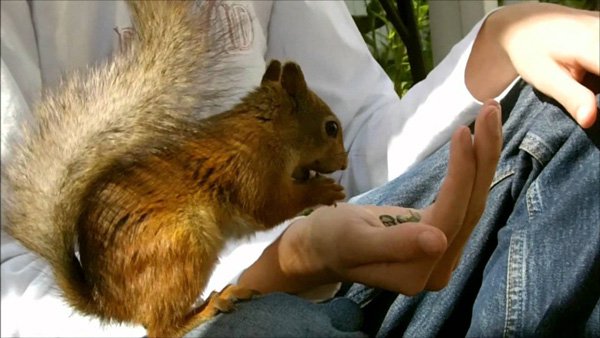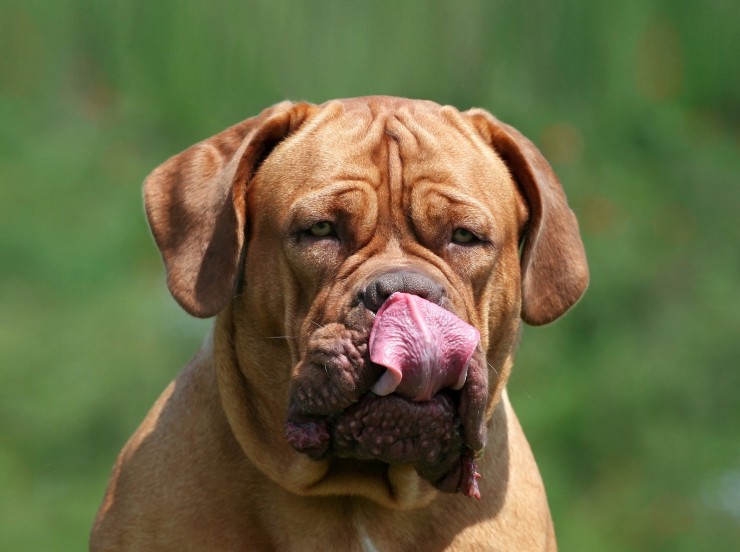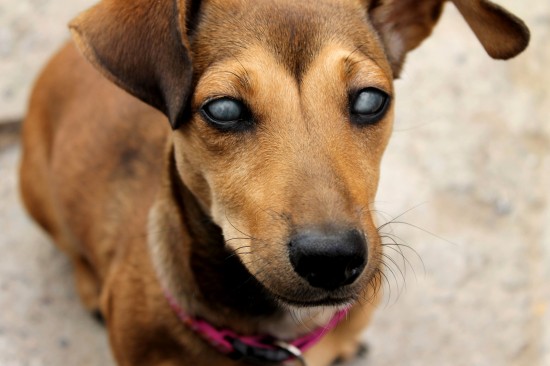Hypothyroidism or Sluggish Thyroid Gland is a disorder of dog's thyroid gland, the most common hormone or endocrine gland deficiency in dogs. This gland has a number of functions and serve as master of all endocrine glands, thyroid is most well known for regulating your dog抯 metabolic rate. The thyroid gland has a number of different functions, but it is most well known for its role in regulating metabolism by producing thyroid hormones. In hypothyroidism, the thyroid gland is under active, and unable to secrete enough thyroid hormone. This, in turn, decreases your dog抯 metabolism. Hypothyroidism causes a wide variety of symptoms, but is often suspected in dogs that have trouble with weight gain or obesity and suffer from hair loss and skin problems.
Animals and dogs that get hypothyroidism, usually start showing signs when they are 4 - 6 years old. Male and female dogs are equally affected but I have noticed that I see it more in neutered pets. This could be because these days, more people own neutered dogs than un-neutered dogs. Hypothyroidism may also be a result of atrophy of the thyroid tissue and resultant infiltration of the tissue by fat, or by a cancer. Hypothyroidism can also be associated with the presence of other diseases and the use of certain medications. Rare cases of congenital hypothyroidism have been diagnosed, as well. Most cases of hypothyroidism are caused by the dog抯 own immune system attacking its own thyroid gland tissue. This condition is called autoimmune thyroiditis. This type of hypothyroidism is further broken down into two types, lymphocytic thyroiditis and idiopathic thyroid atrophy. In both cases, the gland fails to produce enough of the hormone, thyroxine.
Common hypothyroidism symptoms were: Lethargic behavior such as a lack of interest in play, frequent napping, tiring out on long walks. Weight gain, sometimes without an apparent gain in appetite. Bacterial infections of the skin and dry skin. Hair loss, especially on the trunk or tail (搑at抯 tail?. Discoloration or thickening of the skin where hair loss has occurred. Cold intolerance/seeking out warm places to lie down. Slow heart rate and chronic ear infections. Severe behavioral changes such as unprovoked aggression, head tilt, seizures, anxiety and/or compulsivity, and depression. Not all cases of hypothyroidism are due to autoimmune lymphocytic infiltration of the gland. There can be other "inducers" of the disease such as consumption of too much Iodine. These inducers can be very difficult to identify.
Hypothyroidism is easy to diagnose with a blood test that checks the level of various thyroid hormones including T3 and T4. Most hypothyroid dogs respond readily to treatment with synthetic thyroid medication such as Soloxine. Many dogs suffer from a low thyroid hormone level for years without treatment. L-thyroxine (T4) tablets are generally administered twice a day. When given twice a day, some veterinarians prescribe 0.1 mg/10 pounds twice per day as the initial dosage but each case is considered individually. Repeat exams and occasional follow-up blood testing really helps to fine tune the proper amount of medication needed for each patient. Fortunately, thyroid hormone is available in inexpensive tablet form. I generally prescribe the T-4 form of the hormone, l-thyroxine (levothyroxine sodium). All dogs need their dose individually tailored to their needs. Signs that the initial dose may be too high are agitation, excessive thirst, and diarrhea. When these occur the dose needs to be lowered. Once a dog is placed on medication, it should be given for the rest of the pet抯 life. Each veterinarian will have their own opinion as to dose and treatment plan, based on what has worked best for them in the past.

 Caring For Your Dog During The Winter
Caring For Your D
Caring For Your Dog During The Winter
Caring For Your D
 Rabbit Hutches – The Perfect Homes for Your Sweet Little Bunny Pets
Rabbit Hutches – The Perfect Homes for Your Sweet Little B
Rabbit Hutches – The Perfect Homes for Your Sweet Little Bunny Pets
Rabbit Hutches – The Perfect Homes for Your Sweet Little B
 The Five Most Expensive Dog Breeds To Insure
The Five Most Exp
The Five Most Expensive Dog Breeds To Insure
The Five Most Exp
 Signs That Your Dog Needs To Be Seen At an Animal Hospital
Signs That Your Dog Needs To Be Seen At an Animal Hospital
Signs That Your Dog Needs To Be Seen At an Animal Hospital
Signs That Your Dog Needs To Be Seen At an Animal Hospital
 The Work Of The Canine Eye Registration Foundation
The Work Of The C
The Work Of The Canine Eye Registration Foundation
The Work Of The C